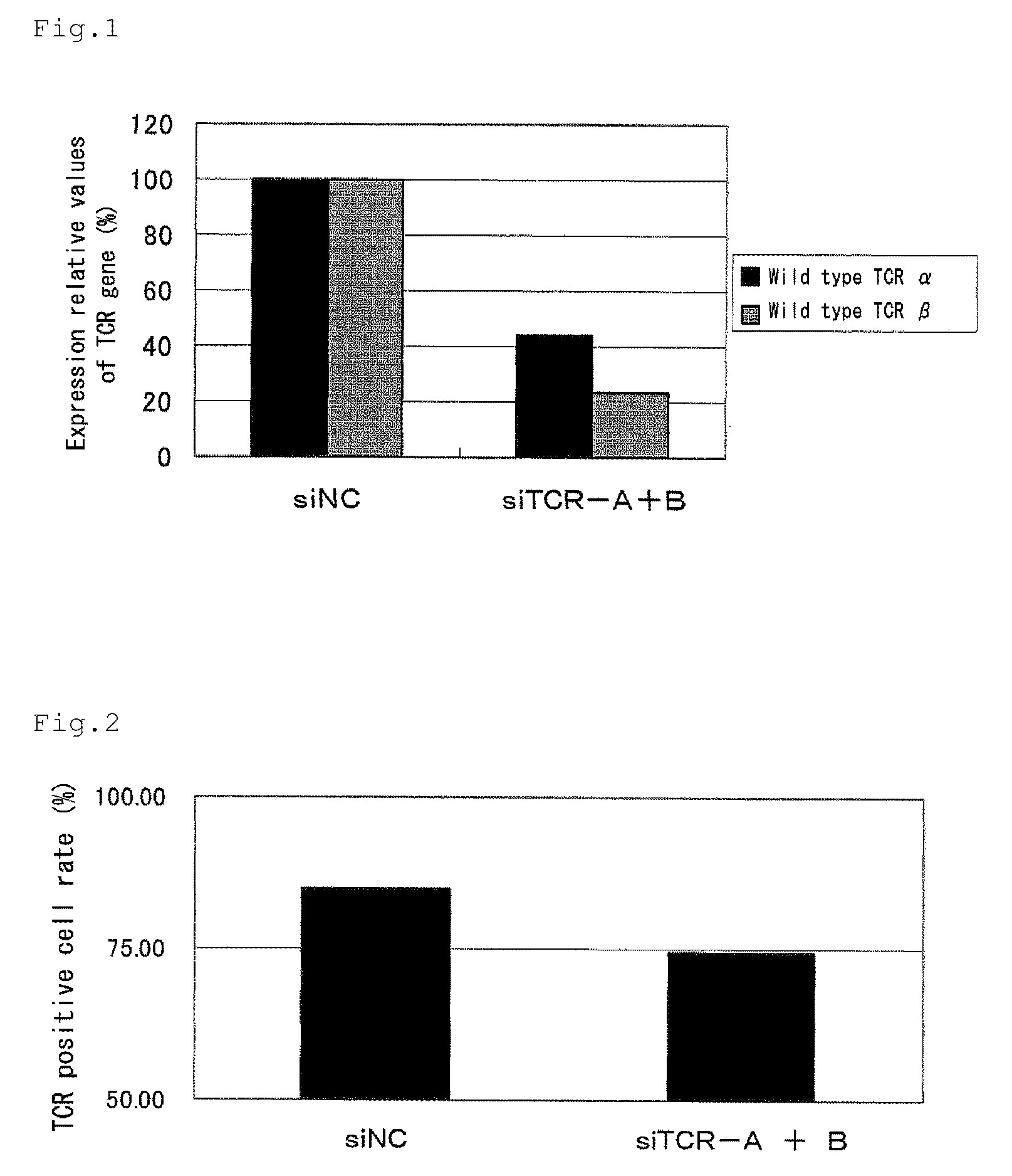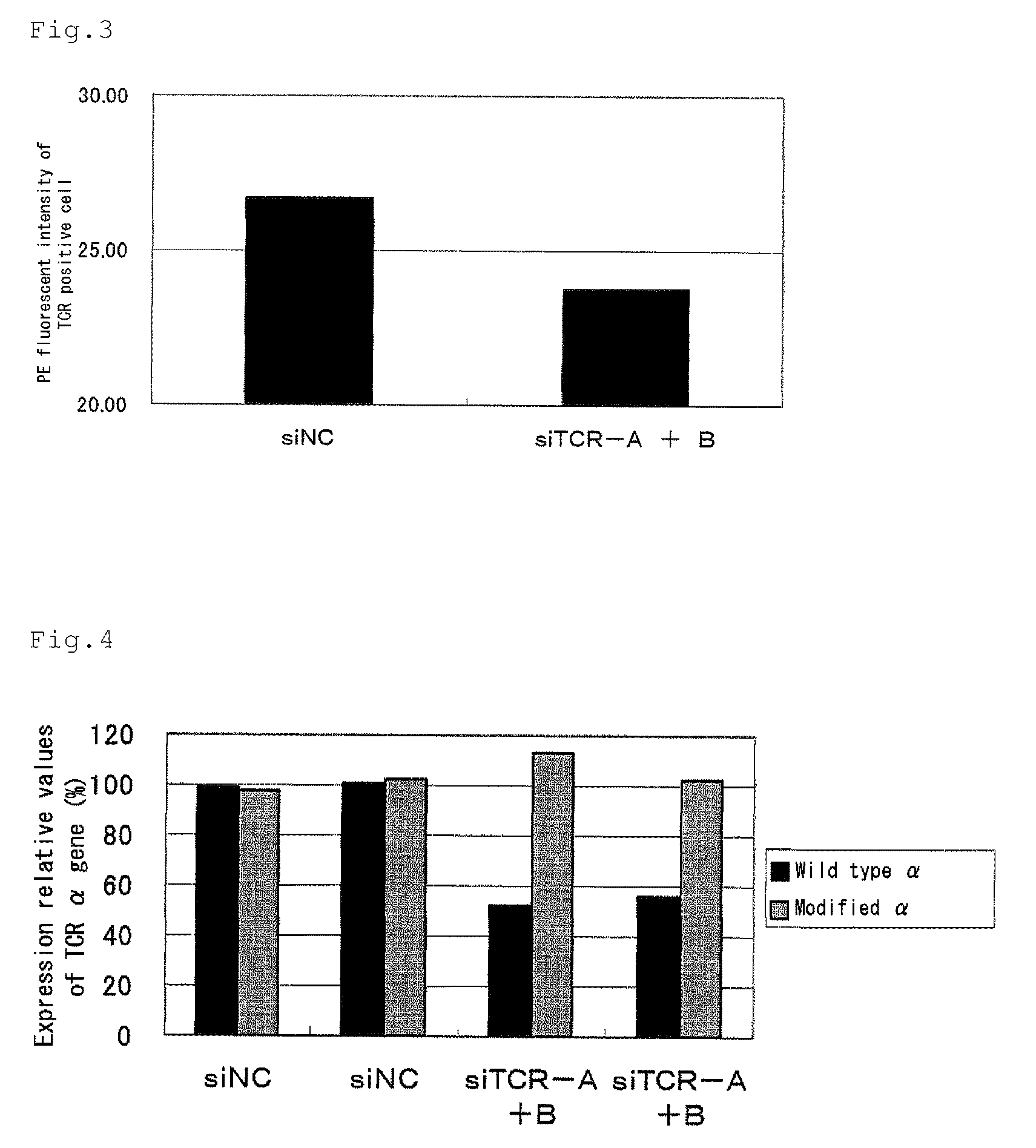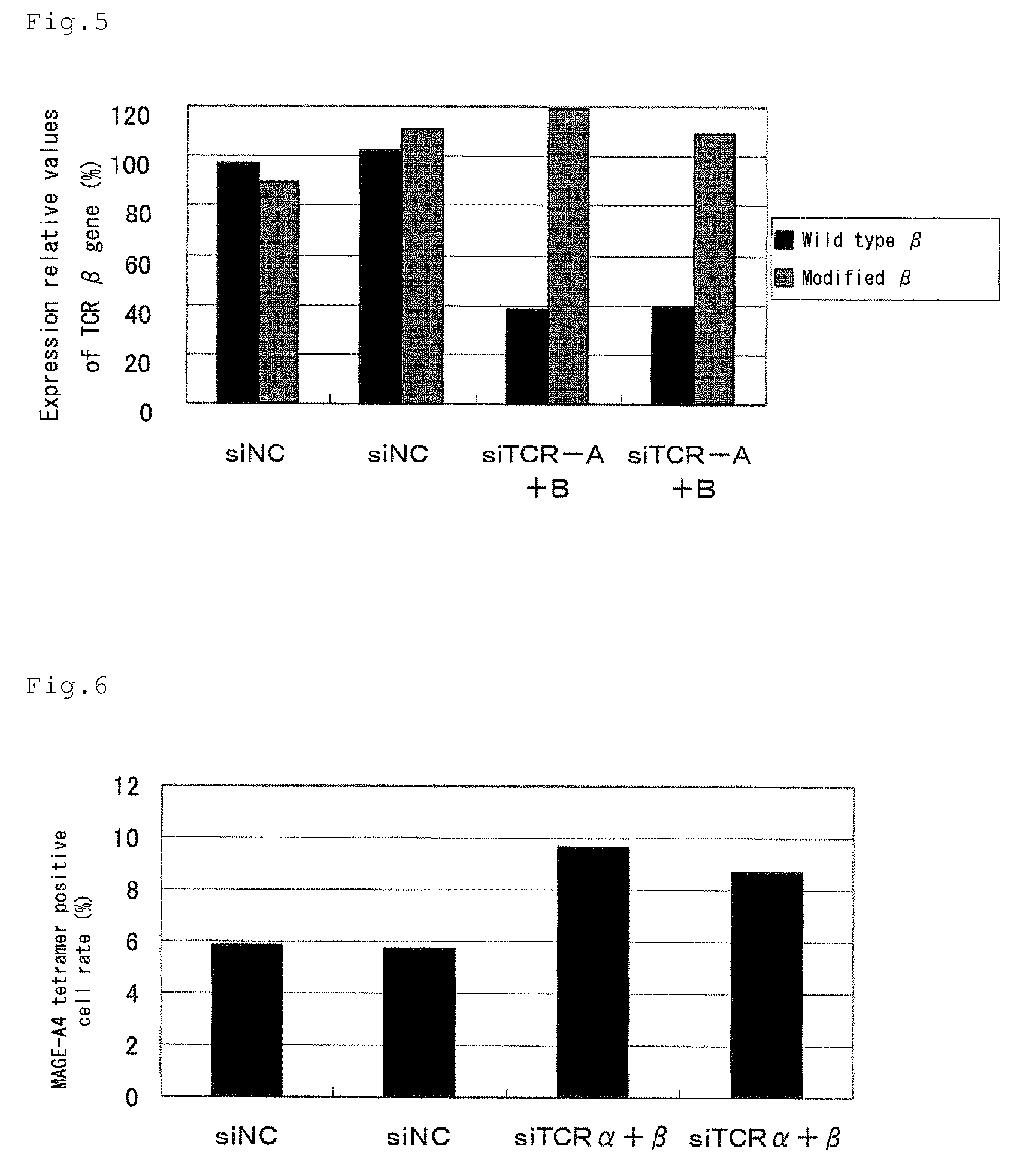Method for expression of specific gene
a technology of oligomeric protein and specific gene, which is applied in the field of cell expressing nonnatural oligomeric protein, can solve the problems of oligomeric protein, tcrs forming a proper heterodimer to recognize the objective antigen, and mispairing between a chain, and achieves the effect of high rate and useful treatmen
- Summary
- Abstract
- Description
- Claims
- Application Information
AI Technical Summary
Benefits of technology
Problems solved by technology
Method used
Image
Examples
example 1
Preparation of Wild-Type and Codon Modified Human T Cell Receptors' α and β Genes
[0098]A codon modified human anti-MAGE-A4 TCR α gene was prepared by modifying a part of a wild-type gene. A nucleic acid fragment containing this gene was cloned into a KpnI-XhoI site of pPCR-Script (Stratagene). A sequence of a nucleic acid fragment containing a codon modified human anti-MAGE-A4 TCR α gene is shown as SEQ ID No.: 1 in Sequence Listing.
[0099]A codon modified human anti-MAGE-4 TCR β gene was prepared by modifying a part of a wild-type gene. A nucleic acid fragment containing this gene was cloned into a KpnI-XhoI site of pPCR-Script. A sequence of a nucleic acid fragment containing a codon modified human anti-MAGE-A4 TCR β gene is shown as SEQ ID No.: 2 in Sequence Listing.
example 2
Confirmation of gene silencing effect of siRNA in human peripheral blood mononuclear cells
[0100]A double-stranded siRNA for wild-type TCR α prepared by annealing SEQ ID Nos.: 3 and 4 (siTCR-A, 50 pmol) and a double-stranded siRNA for wild-type TCR β prepared by annealing SEQ ID Nos.: 5 and 6 (siTCR-B, 50 pmol) were mixed and introduced into a peripheral blood mononuclear cell (PBMC) separated from human peripheral blood using Human T Cell Nucleofector Kit (Amaxa) according to the procedure in the product manual. As a negative control, 100 pmol of an siRNA (siNC) prepared by annealing SEQ ID Nos.: 7 and 8 was introduced. Two days after from introduction, cells were recovered, and extraction of total RNA and DNaseI treatment were carried out with QIAGEN RNeasy Micro Kit (manufactured by Qiagen). The extracted total RNA was subjected to a reverse transcription reaction with M-MLV-RTase using a random primer (6 mer), and real time PCR was carried out using SYBR Premix Ex Taq and primers...
example 3
Confirmation of Protein Expression Inhibiting Effect of siRNA in Human Peripheral Blood Mononuclear Cells
[0102]The human peripheral blood mononuclear cells into which a double-stranded siRNA was introduced in Example 2 was stained with a PE-anti human TCR antibody (manufactured by BD Pharmingen) 3 days after introduction of a double-stranded siRNA, and a TCR positive cell ratio, and a fluorescent intensity of PE in TCR positive cells were measured by a flow cytometer. FIG. 2 shows TCR positive cell ratios, and FIG. 3 shows a fluorescent intensity of PE in TCR positive cells. The abscissa axis shows the introduced siRNAs. The ordinate axis shows a TCR positive cell ratio in FIG. 2, and shows a fluorescent intensity of PE in TCR positive cells in FIG. 3. As shown in FIGS. 2 and 3, by introducing double-stranded siRNAs for wild-type TCR α and β, reductions in the expression rate and the expression level of the endogenous wild-type TCR α / β complex protein of a human peripheral blood mon...
PUM
| Property | Measurement | Unit |
|---|---|---|
| real time PCR | aaaaa | aaaaa |
| real time PCR | aaaaa | aaaaa |
| chain length | aaaaa | aaaaa |
Abstract
Description
Claims
Application Information
 Login to View More
Login to View More - R&D
- Intellectual Property
- Life Sciences
- Materials
- Tech Scout
- Unparalleled Data Quality
- Higher Quality Content
- 60% Fewer Hallucinations
Browse by: Latest US Patents, China's latest patents, Technical Efficacy Thesaurus, Application Domain, Technology Topic, Popular Technical Reports.
© 2025 PatSnap. All rights reserved.Legal|Privacy policy|Modern Slavery Act Transparency Statement|Sitemap|About US| Contact US: help@patsnap.com



